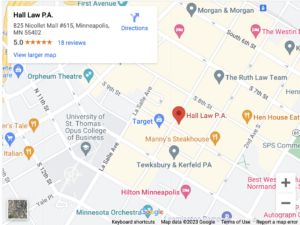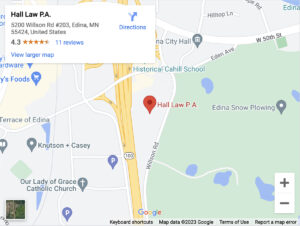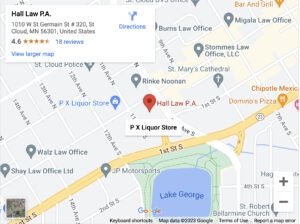
When you watch a courtroom drama on TV, you hear the word “evidence” thrown around a lot. The concept of evidence is huge in the legal world, especially in personal injury cases. But what is evidence?
It is crucial to understand what evidence is and how it can impact your personal injury case.
Types of Evidence
Common types of evidence that come up in a personal injury case, include:
- Physical Evidence: Physical evidence is something you can touch, like damaged property.
- Documentary Evidence: Documentary evidence includes evidence in the form of written documents. Any form of writing that memorializes or records words said can be documentary evidence. This evidence includes contracts, emails, medical bills, photographs of car crashes, text messages, and the list goes on and on.
- Testimonial Evidence: Testimonial evidence occurs when someone says something the court needs to know. If your friend saw you get hurt and tells the court what they saw, that’s testimonial evidence.
- Expert Witness Testimony: Sometimes, experts like doctors or accident reconstructionists are called to give their professional opinions and help explain complicated subjects.
- Digital Evidence: Digital evidence consists of information stored or transmitted electronically. This evidence includes mages, surveillance footage, and computer files.
Understanding these types of evidence can help you follow along in a courtroom setting.
Why Is Evidence Important?
In the legal system, evidence is what helps the judge or jury make a decision. If you claim that someone’s negligence caused your injury, you need proof to support your claim. This evidence can come in many forms, including photographs of the accident scene, medical reports, or witness statements. With solid evidence, your case could be a lot stronger.
How Is Evidence Used?
Evidence isn’t just thrown into the courtroom randomly. There are extensive rules. Lawyers must follow these rules to present their case correctly. Before a piece of evidence can be presented, it has to be “admissible,” meaning it meets specific legal criteria. Sometimes, lawyers argue about whether something should be allowed as evidence, and it’s up to the judge to decide.
The Rules of Evidence
Who makes these rules? The rules of evidence are established by law. Lawyers must study these rules intensely to ensure they present their cases effectively. In personal injury cases, the rules of evidence are vital. Failing to present evidence correctly could mean the difference between winning and losing your case.
The following are rules of evidence that are often involved in personal injury cases:
- Relevance: Evidence must be directly related to the case. A photo of a sunny beach is lovely, but it won’t help prove how an accident happened.
- Credibility: The source of the evidence must be trustworthy. That’s why documents are often verified, and witnesses can be cross-examined.
- Timeliness: Evidence must be presented within a particular time frame, especially if it could deteriorate or become less reliable.
- Chain of Custody: This means keeping track of who has handled the evidence to ensure it hasn’t been compromised or altered.
- Authenticity: The evidence must be genuine and not tampered with or forged. Proving authenticity may require additional documents or witness testimonies.
- Hearsay: Generally, hearsay evidence, or statements made out of court, are not admissible unless they meet certain exceptions. Understanding what counts as hearsay and what doesn’t can be tricky but essential.
- Expert Testimony: Expert witnesses must be qualified in their field and provide opinions based on scientific or specialized knowledge relevant to the case.
- Privilege: Some conversations, like those between a lawyer and client, are considered privileged and are generally not admissible as evidence.
Each of these rules is essential in ensuring the legal process is fair and just. Knowing them can help you better understand how your personal injury case will unfold.
The Power of Evidence in Personal Injury Cases
Evidence is the cornerstone of any legal case, particularly in personal injury lawsuits. It can come in many forms—physical, documentary, testimonial, and digital. Each type of evidence has to follow strict rules to be considered by the court. These rules ensure that the trial process is fair and that the best possible decision is made.
Understanding evidence and how it works can empower you to be more involved in your case. It helps you know what to expect and how to assist your attorney in gathering what they need to advocate effectively for you.
The next time you hear the word “evidence,” you’ll know it’s not just a term thrown around in TV shows. It’s an essential part of the legal process whether you are injured in a truck accident or motorcycle accident. Evidence can significantly impact the outcome of your personal injury case.
Contact an Experienced Minneapolis Personal Injury Attorney to Learn More About Evidence
One of the most complex aspects of a personal injury case is the question of evidence. If somebody else’s negligence has injured you, talk to an experienced personal injury attorney who can help you navigate the legal process. They can help you collect the relevant evidence, present it in court, and present your case persuasively.
To learn more about relevant evidence in your case, call us at (800) 292-1979 or contact us online to schedule a free consultation with an experienced Minneapolis personal injury lawyer from Hall Law Personal Injury Attorneys.



